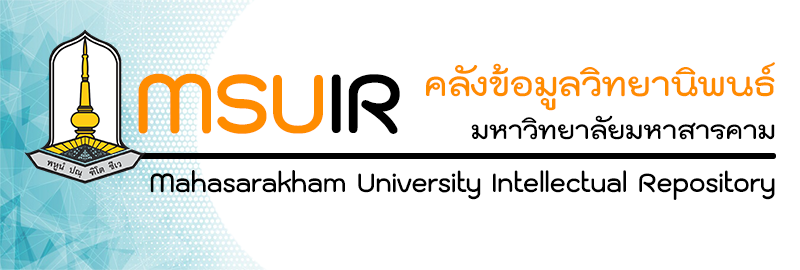Please use this identifier to cite or link to this item:
http://202.28.34.124/dspace/handle123456789/2687| Title: | A study on a prediction technique for vibration of a particle separator: A case study of beverage industry การศึกษาเทคนิคการพยากรณ์การสั่นของเครื่องแยกสสาร กรณีศึกษาโรงงานอุตสาหกรรมเครื่องดื่ม |
| Authors: | Chokanan Rannakhot โชคอนันต์ รันนะโคตร Worawat Sa-Ngiamvibool วรวัฒน์ เสงี่ยมวิบูล Mahasarakham University Worawat Sa-Ngiamvibool วรวัฒน์ เสงี่ยมวิบูล worawat.s@msu.ac.th worawat.s@msu.ac.th |
| Keywords: | การพยากรณ์ เครื่องแยกสสาร LSTM Machine Learning Model การหาความแม่นยำของการพยากรณ์ Prediction Technique Separator Machine LSTM Machine Learning Model The Accuracy Of The Forecast |
| Issue Date: | 21 |
| Publisher: | Mahasarakham University |
| Abstract: | This research study is designed to predict the vibration of a separator machine using LSTM Machine Learning Model and using Bowlspeed data. And the Motorcurrent data. To predict vibration during the first phase of machine start-up, data from 2023 were used in the forecasting process, namely model training. Model testing and model verification Then, the forecast was tested on 30 sets of engine operation data and the accuracy of the forecast was determined by finding the MAE, MSE and RMSE error values and comparing the best values. Worst value Acceptable values and analyze the experimental results. Using the LSTM Machine Learning Model shows good predictive performance. Including acceptable forecast values. By choosing to consider only RMSE, the prediction values obtained from the Bowlspeed data tend to have a better RMSE, while the prediction values obtained from the Motorcurrent data have a lower RMSE value. The optimization approach is as follows: Improving the screening. Information and the amount of data used affects the efficiency of the forecast. And good display Affects the efficiency of machine management. วิทยานิพนธ์เล่มนี้ ได้ทำการศึกษาและออกแบบการพยากรณ์การสั่นของเครื่องแยกสสาร โดยใช้ LSTM Machine Learning Model และใช้ข้อมูล ความเร็วรอบการหมุน และกระแสไฟฟ้าของมอเตอร์ ในการพยากรณ์การสั่นในช่วงแรกของการเปิดเครื่องจักร ใช้ข้อมูลปี พ.ศ. 2566 เพื่อใช้ในกระบวนการพยากรณ์ ได้แก่ การฝึกฝนแบบจำลอง การทดสอบแบบจำลอง และการตรวจสอบแบบจำลอง จากนั้นทำการทดสอบการพยากรณ์ชุดข้อมูลการเดินเครื่องจำนวน 30 ชุด แล้วทำการหาความแม่นยำของการพยากรณ์ด้วยการหาค่าความคลาดเคลื่อน MAE MSE และ RMSE ทำการเปรียบเทียบค่าที่ดีที่สุด ค่าที่แย่ที่สุด ค่าที่ยอมรับได้ และวิเคราะห์ผลการทดลอง การใช้ LSTM Machine Learning Model แสดงให้เห็นถึงประสิทธิภาพการพยากรณ์ที่ดี รวมถึงค่าการพยากรณ์ที่ยอมรับได้ โดยเลือกพิจารณาเฉพาะ RMSE ค่าการพยากรณ์ที่ได้จากความเร็วรอบการหมุนมีแนวโน้ม RMSE ที่ดีกว่า ในขณะที่ค่าการพยากรณ์ที่ได้จากกระแสไฟฟ้าของมอเตอร์มีค่า RMSE ที่น้อยกว่า แนวทางการเพิ่มประสิทธิภาพ ดังนี้ การปรับปรุงการคัดกรองข้อมูล และจำนวนข้อมูลที่นำมาใช้ ส่งผลต่อประสิทธิภาพของการพยากรณ์ และการแสดงผลที่ดี ส่งผลต่อประสิทธิภาพการจัดการเครื่องจักร |
| URI: | http://202.28.34.124/dspace/handle123456789/2687 |
| Appears in Collections: | The Faculty of Engineering |
Files in This Item:
| File | Description | Size | Format | |
|---|---|---|---|---|
| 65010383003.pdf | 2.42 MB | Adobe PDF | View/Open |
Items in DSpace are protected by copyright, with all rights reserved, unless otherwise indicated.

